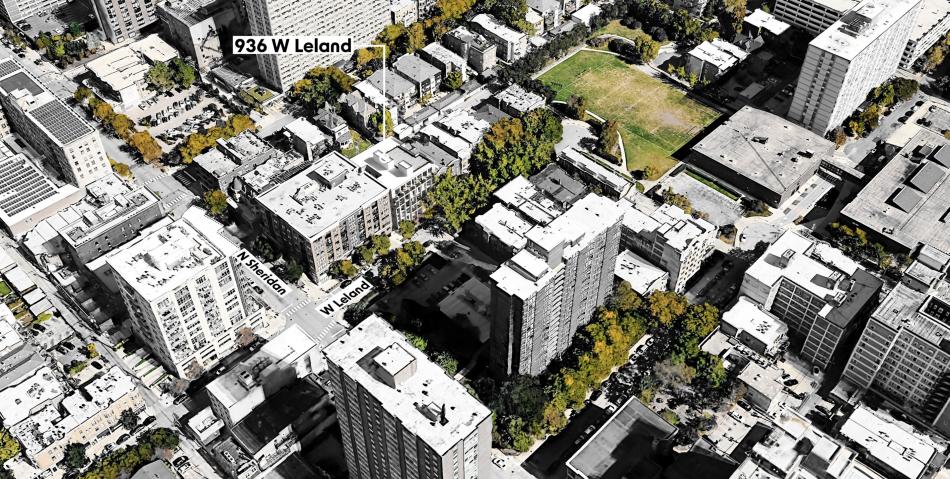Urban Air Mobility Review (2020–Present) Highlights Advances in Communication, Management, and Sustainability – Quantum Zeitgeist

Urban Air Mobility: A Review of Technological Advancements and Alignment with Sustainable Development Goals
A comprehensive review of Urban Air Mobility (UAM) developments since 2020 reveals significant progress toward creating a scalable and environmentally responsible transportation ecosystem. Advances in communication, air traffic management, and sustainability are foundational to this evolution. These efforts directly support several United Nations Sustainable Development Goals (SDGs), particularly SDG 9 (Industry, Innovation, and Infrastructure), SDG 11 (Sustainable Cities and Communities), and SDG 7 (Affordable and Clean Energy).
Key Areas of Technological Advancement and SDG Contributions
H3: Resilient Communication and Sensing Infrastructure (SDG 9)
The development of reliable infrastructure is critical for UAM safety and efficiency, aligning with SDG 9’s goal to build resilient infrastructure and foster innovation. Key technological breakthroughs include:
- Compact Antenna Systems: A compact leaky-wave antenna (LWA) array operating between 52.33 and 68.7GHz has been developed. Its design achieves high gain and wide azimuth coverage, ensuring robust air-to-ground data exchange, a cornerstone of innovative transportation infrastructure.
- Enhanced Radar Systems: A novel geometric sequence decomposition (GSD) approach significantly improves range and velocity estimation, enhancing target detection accuracy even in low signal-to-noise conditions.
- Efficient Obstacle Detection: A compressive sensing (CS)-based framework for multiple-input multiple-output (MIMO) radar systems provides superior imaging performance with reduced data requirements, offering a robust navigation tool for complex urban environments.
H3: Innovative Air Traffic Management for Sustainable Cities (SDG 11)
To make cities inclusive, safe, and resilient, UAM requires sophisticated management systems. Progress in this area directly contributes to SDG 11 by aiming to provide access to safe and sustainable transport systems for all.
- AI-Driven Collaborative Management: A multi-agent deep reinforcement learning (MADRL) framework enables cooperative, dynamic scheduling among multiple vehicles. This ensures equitable service distribution and efficient response to commuter demands, fostering a more inclusive urban transport network.
- Scalable Scheduling Models: An Integer Linear Programming (ILP) model, enhanced with incremental solving and look-ahead search strategies, has been developed to manage vehicle scheduling and relocation, improving overall service coverage and efficiency.
- Decentralized Air Traffic Control: A proposed hierarchical air traffic management (ATM) model organizes airspace through local “vertihubs” and “vertiports.” This decentralized approach is designed to safely manage high-density air traffic in urban areas.
- Infrastructure and Public Adoption: Studies indicate a high potential for public adoption, with up to 45% of commuters in congested areas willing to use UAM. This highlights the strategic importance of vertiport placement to ensure integration with existing transport networks and promote accessible urban mobility.
H3: Sustainable Energy and Operations (SDG 7 & SDG 13)
The sustainability of UAM is paramount, with research focused on clean energy and environmental responsibility, directly supporting SDG 7 (Affordable and Clean Energy) and SDG 13 (Climate Action).
- Efficient Power Solutions: Research is concentrated on optimizing power systems for electric vertical take-off and landing (eVTOL) vehicles. This includes the development of hybrid energy storage systems to maximize efficiency and range.
- Energy Consumption Optimization: Advanced data analytics and AI are used to optimize flight paths, minimizing energy consumption and the overall environmental footprint of UAM operations.
- Environmental Assessment: A core component of the research involves a holistic assessment of UAM’s environmental impact, ensuring that its deployment contributes positively to climate action and sustainable development.
Challenges and Future Directions for Sustainable Integration
While significant progress has been made, challenges remain in fully realizing a sustainable UAM ecosystem. Future work must focus on addressing these hurdles to ensure alignment with global sustainability targets.
- Infrastructure Integration: Seamlessly integrating UAM technologies, including vertiports and communication networks, into existing urban infrastructure remains a primary challenge.
- Regulatory Frameworks: The development of comprehensive regulatory frameworks is essential to ensure safe, efficient, and environmentally responsible UAM operations on a large scale.
- Technological Refinement: Continued refinement of communication, management, and propulsion technologies is necessary to enhance safety and efficiency, further strengthening UAM’s contribution to the Sustainable Development Goals.
Analysis of Sustainable Development Goals in the Article
1. Which SDGs are addressed or connected to the issues highlighted in the article?
-
SDG 9: Industry, Innovation, and Infrastructure
- The article focuses on the development of a new, innovative transportation infrastructure known as Urban Air Mobility (UAM). It details technological advancements in communication systems, air traffic management, antenna design, and AI-driven decision-making, which are all core components of building resilient and innovative infrastructure. The goal is to create a “scalable” and “reliable” ecosystem for urban travel.
-
SDG 11: Sustainable Cities and Communities
- The primary motivation for UAM presented in the article is to “alleviate city congestion and improve access.” This directly addresses the goal of making cities more inclusive, safe, resilient, and sustainable. The research also emphasizes integration with existing ground transportation through “multi-modal transportation planning,” which is crucial for creating sustainable urban transport systems.
-
SDG 7: Affordable and Clean Energy
- The article highlights a strong focus on “sustainable practices,” specifically mentioning “energy-efficient propulsion,” “sustainable power solutions” for “electric vertical take-off and landing (eVTOL) vehicles,” and “optimizing flight paths to minimize energy consumption.” This aligns with the goal of increasing energy efficiency and promoting clean energy technologies in the transport sector.
-
SDG 13: Climate Action
- By focusing on energy-efficient electric vehicles (eVTOLs) and “environmental impact reduction,” the development of UAM contributes to climate change mitigation. Shifting urban transport from fossil-fuel-based ground vehicles to a potentially cleaner, electric-powered aerial system is a strategy to reduce the carbon footprint of cities, which is a key aspect of climate action.
2. What specific targets under those SDGs can be identified based on the article’s content?
-
Under SDG 9 (Industry, Innovation, and Infrastructure):
- Target 9.1: Develop quality, reliable, sustainable and resilient infrastructure. The article’s entire premise is about developing a new UAM infrastructure that is safe, reliable, and scalable, supported by advanced communication and management systems to ensure resilient operations.
- Target 9.4: Upgrade infrastructure and retrofit industries to make them sustainable, with increased resource-use efficiency and greater adoption of clean and environmentally sound technologies. The focus on “energy-efficient propulsion,” “sustainable power solutions,” and eVTOLs represents an effort to create a new transportation industry based on clean and efficient technology.
-
Under SDG 11 (Sustainable Cities and Communities):
- Target 11.2: Provide access to safe, affordable, accessible and sustainable transport systems for all. UAM is presented as a solution to “alleviate city congestion” and provide “efficient and accessible city travel.” The study on commuter preferences and the development of scheduling models to “improve service coverage” directly support this target.
- Target 11.6: Reduce the adverse per capita environmental impact of cities. The emphasis on “environmental assessment” and “environmental impact reduction” through energy-efficient electric vehicles aims to lessen the negative environmental effects of urban transportation.
-
Under SDG 7 (Affordable and Clean Energy):
- Target 7.3: Double the global rate of improvement in energy efficiency. The research concentrates on “maximization of efficiency and range” for eVTOLs, “optimizing flight paths to minimize energy consumption,” and developing “energy-efficient propulsion,” all of which are direct contributions to improving energy efficiency in the transport sector.
3. Are there any indicators mentioned or implied in the article that can be used to measure progress towards the identified targets?
-
Indicators for Sustainable Infrastructure and Transport (Targets 9.1 & 11.2):
- Commuter Adoption Rate: The article explicitly mentions a study finding that “up to 45% of commuters would prefer UAM during peak congestion.” This percentage serves as a direct indicator of the system’s accessibility, desirability, and potential to become a viable part of the public transport mix.
- Service Coverage and Equity: The development of a “multi-agent deep reinforcement learning (MADRL) framework” to ensure “equitable service distribution” implies that an indicator would be the percentage of the urban population with access to vertiports or UAM services.
- System Safety and Reliability: The article points to “target detection accuracy” as a key metric, noting that a new approach “significantly improving target detection accuracy” was developed. This is a measurable indicator of the system’s safety.
-
Indicators for Energy Efficiency and Clean Technology (Targets 7.3 & 9.4):
- Energy Consumption: The goal of “optimizing flight paths to minimize energy consumption” implies that energy use per passenger-kilometer would be a key performance indicator to measure progress in energy efficiency.
- Communication Efficiency: The article mentions that a new antenna design achieved “high gain and wide azimuth coverage” and that a compressive sensing framework “reduced data requirements.” These technical specifications are measurable indicators of the efficiency and performance of the underlying technology.
4. Table of SDGs, Targets, and Indicators
| SDGs | Targets | Indicators |
|---|---|---|
| SDG 9: Industry, Innovation, and Infrastructure |
|
|
| SDG 11: Sustainable Cities and Communities |
|
|
| SDG 7: Affordable and Clean Energy |
|
|
| SDG 13: Climate Action |
|
|
Source: quantumzeitgeist.com
What is Your Reaction?
 Like
0
Like
0
 Dislike
0
Dislike
0
 Love
0
Love
0
 Funny
0
Funny
0
 Angry
0
Angry
0
 Sad
0
Sad
0
 Wow
0
Wow
0














































































